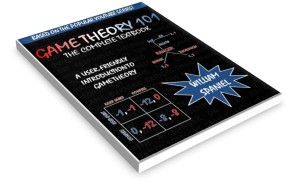This lecture covers transitivity, the second preference axiom necessary for expected utility theory.
Takeaway Points
- A preference ordering is transitive if, for any three outcomes A, B, and C, a preference for A over B and a preference for B over C implies a preference for A over C.
- Transitivity rules out preference cycles. If A were not preferred to C, there would be no most preferred outcome—some other outcome would always trump an outcome in question. This allows us to assign numbers to preserve the rank ordering. This definition of transitivity is therefore analogous to the standard mathematical property of transitivity.
- For example, a transitive preference would be preferring apples to bananas, bananas to cranberries, and apples to cranberries. An intransitive preference would be preferring apples to bananas, bananas to cranberries, and cranberries to apples.
- We should have a reasonable expectation that an individual’s preferences are transitive. Preference cycles are bizarre, and an individual would likely correct himself if someone pointed out an intransitivity in his preferences.
- While transitive preferences eliminate the silliness of preference cycles, they still need not be sensible. Someone who prefers dying a painful death to $0, $0 to $1 million, and dying a painful death to $1 million is perfectly fine for expected utility theory.

